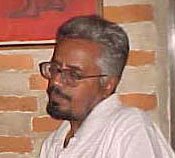The Church of Cinema and the Da Vinci Code
The Church of Cinema and the Da Vinci Code
The film Da Vinci Code has once again brought into focus the issue of censorship – this time not relating to sexuality but religious sentiments. This film, some fear, denigrates Jesus, portrays 'untruths' and thus hurts the 'true' believers of Christian faith.
The Central Government overreacted to the issue (if only they were as proactive with regard to other issues?) with the Minister himself arranging a preview for select representatives (obviously incorruptible 'representatives' from the community - people who can make out fact from fiction and cannot be influenced!) to seek their approval as it were before sanctioning the commercial release of the film. Apart from creating an unhealthy and totally undemocratic precedent of bypassing the institution of the Central Board of Film Certification (which itself is a redundant body awaiting its natural death) and thereby violating established norms, this act has also set a dangerous example of sorts for other communities and groups increasingly becoming belligerent in our midst. Now anyone can demand bans or at least a preview of a film that purportedly portray them or their beliefs! Every other film will have to seek the approval of the 'affected' or depicted community. And no one would be able to tell where the hurt starts or ends. This is nothing but considering the public at large as an idiotic lot incapable of judging what is good or bad for them, or as children, to be protected both from the pleasures of sex and the pains of truth.
Most interesting point is the question why the Church and the self-appointed true believers are worried about such redundant tools like censorship in the age of internet and DVD revolution. Considering the publicity the book, and later the film, has already received, its DVDs are going to circulate widely. The book has already sold millions worldwide multiplied by its pirated editions. The Malayalam translation of the book has also come out. So, thanks to technology, it is no longer possible to check accessibility to the book or the viewing of the film any more. But why is the Church still worried about the commercial release of the film in theatres?
This is a question that brings into focus the defining characteristic of the medium of cinema. What is cinema but a Church where people congregate at fixed times to worship images in the dark? We go to an enclosed space, dark and womb-like, sit in rows just like in a church, and wait prayfully for the images of light to unravel before us; these images we hope will deliver us from the darkness around and transport us into another world. At a deeper level, it is this congregatory and occult-community nature of cinema that seems to trouble the Church more than the content of the film itself. Hence the soft attitude to the other media like the book, the DVD and the internet. Those are private and lonely pursuits of individuals as against the Church of Cinema. This church that is global the rites are universal and the entry is not reserved for the elite.
C S Venkiteswaran


